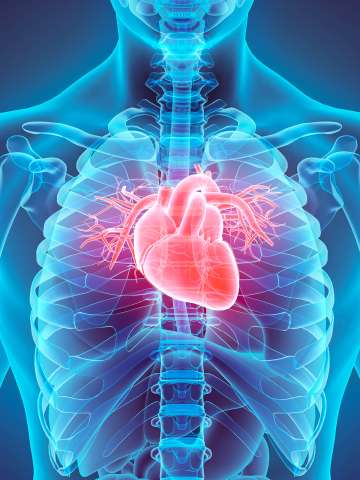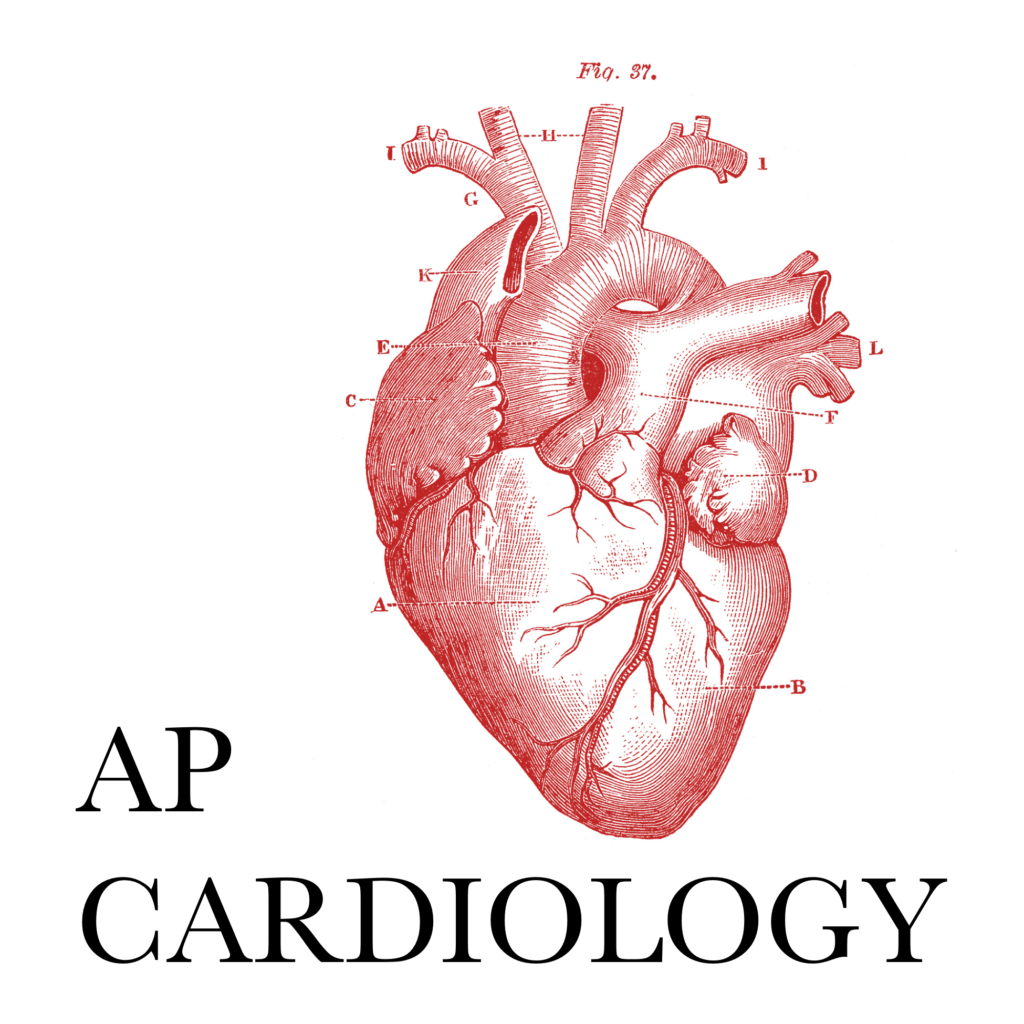5 ways Dr Garcia recommends improving your heart health today
Wiki Article
Comprehending the Value of Cardiology in Modern Medical Care Providers
Cardiology plays a critical role in modern healthcare, especially as cardiovascular disease remains to be the leading root cause of mortality worldwide. Developments in diagnostics and therapy have transformed individual care, allowing earlier interventions and enhanced results. Moreover, the change in the direction of preventative cardiology encourages people to handle their wellness proactively. As innovation remains to develop, the integration of innovative remedies might additionally redefine cardiology's effect on public health, prompting a more detailed assessment of emerging trends and their implications.The Frequency of Heart Problem and Its Effect On Public Wellness
Heart illness remains the leading reason of death globally, its influence prolongs much past individual people to impact public health systems and economic situations. The high occurrence of cardiovascular disease places a significant stress on medical care resources, demanding enhanced financing for therapy, rehab, and avoidance programs. Public health efforts must attend to threat elements such as excessive weight, cigarette smoking, and less active lifestyles, which contribute substantially to the rising occurrence of heart conditions.Moreover, the financial burden linked with cardiovascular disease is enormous, incorporating not just straight medical costs but likewise indirect costs connected to shed productivity and premature mortality. Areas deal with obstacles in taking care of these costs, usually leading to variations in health care accessibility and end results. As the populace ages and lifestyle-related risks continue to intensify, the seriousness for reliable cardiology treatments comes to be paramount. Resolving heart condition is not only a matter of private health and wellness however additionally a critical public health concern.Breakthroughs in Heart Diagnostics and Imaging Techniques
Current innovations in cardiac diagnostics and imaging methods have actually changed the area of cardiology, boosting the capacity to keep an eye on and find heart illness. Techniques such as cardiac MRI, CT angiography, and echocardiography have come to be significantly innovative, providing comprehensive photos of cardiac structures and functions. These techniques enable the very early identification of conditions like coronary artery condition, heart failing, and valvular disorders.Moreover, improvements in non-invasive diagnostics, such as wearable technology and remote monitoring gadgets, have encouraged individuals and doctor. These tools promote real-time monitoring of heart rhythms and other essential indications, resulting in prompt interventions. In addition, expert system is being incorporated into imaging evaluation, improving precision and effectiveness in diagnosis.Advancements in Treatment Alternatives for Heart Conditions
Current improvements in cardiology have brought about considerable advancements in therapy options for heart disease. These consist of innovative surgical methods that boost procedural results and arising medications that use brand-new avenues for treatment. As the area develops, these technologies play an important duty in improving client treatment and end results.Advanced Surgical Techniques
Developments in surgical strategies have transformed the landscape of cardiology, using brand-new wish for patients with heart problems. Minimally intrusive treatments, such as catheter-based treatments, have considerably lowered recuperation times and healthcare facility keeps. Strategies like robotic-assisted surgery enhance precision, enabling specialists to browse intricate physiological frameworks with greater accuracy. Developments in imaging innovation assist in real-time visualization throughout procedures, enhancing results. Transcatheter aortic valve replacement (TAVR) exemplifies an advancement in dealing with aortic stenosis, allowing valve replacement without open-heart surgical treatment. Furthermore, hybrid methods that integrate catheter-based and surgical approaches give customized options for different heart problems. These innovative medical methods not just improve client safety but also broaden treatment options, emphasizing the essential duty of advancement in contemporary cardiology practices.Emerging Treatments and medicines
As the landscape of cardiology remains to evolve, arising treatments and medicines play a critical duty in boosting treatment alternatives for heart disease. Advancements such as novel anticoagulants and advanced lipid-lowering representatives have changed the administration of heart diseases, considerably decreasing patient morbidity and death. Additionally, the development of genetics therapies and regenerative medication provides promising methods for dealing with conditions formerly regarded incurable. Scientific trials are continually exposing the efficiency of these treatments, pressing the limits of conventional therapies. In addition, the integration of digital health modern technologies facilitates tailored medicine, allowing for customized treatment plans based on hereditary and way of life variables. Jointly, these developments underscore the vibrant nature of cardiology, boosting person end results and redefining criteria of treatment in contemporary health care.The Role of Preventive Cardiology in Individual Treatment
Preventative cardiology plays a vital duty in person treatment by concentrating on the identification of risk factors that add to heart problem. Through lifestyle modification techniques and early detection methods, doctor can properly lower the occurrence of cardio occasions - Dr Garcia. This proactive approach not just boosts patient end results but additionally advertises lasting health and wellnessDanger Aspect Identification
While cardiovascular diseases remain a leading root cause of morbidity and death worldwide, reliable danger aspect identification serves as a cornerstone of preventative cardiology. Recognizing threat elements such as hypertension, hyperlipidemia, family members, and diabetes mellitus history is vital for early intervention. Medical care experts utilize various evaluating techniques to evaluate these aspects, enabling for customized safety nets. In addition, comprehending a person's way of life choices, such as cigarette smoking and physical inactivity, better informs threat assessments. This detailed examination makes it possible for clinicians to create individualized treatment plans targeted at mitigating dangers. By focusing on risk aspect recognition, healthcare systems can improve patient results and lower the overall problem of cardiovascular diseases, eventually adding to improved public health and wellness approaches and resource allotment.Way Of Living Modification Techniques
A wide variety of researches highlights the crucial function of way of living alteration strategies in browse this site minimizing heart disease risk. These techniques incorporate nutritional changes, increased physical activity, cigarette smoking cessation, and weight administration. By taking on a heart-healthy diet regimen abundant in fruits, veggies, entire grains, and lean healthy proteins, people can lower cholesterol levels and blood pressure. Routine exercise reinforces the heart and boosts general cardiovascular health and wellness. Furthermore, stopping cigarette smoking considerably minimizes the threat of cardiovascular disease and boosts healing prices for those with current conditions. Weight administration even more adds to cardiovascular health by mitigating various other threat aspects such as diabetes mellitus and high blood pressure. Carrying out these way of life changes not only advertises specific wellness however also functions as a keystone of precautionary cardiology in client care.Very Early Discovery Methods
Lifestyle modifications greatly add to decreasing heart disease dangers, but they are most effective when coupled with early detection strategies. Precautionary cardiology emphasizes the value of identifying potential heart problems before they intensify right into severe conditions. Techniques such as high blood pressure monitoring, cholesterol testing, and advanced imaging technologies like echocardiograms play critical functions in evaluating cardio health. Biomarkers and hereditary testing likewise enhance the accuracy of very early detection, permitting for tailored preventative techniques. Normal cardiac threat evaluations equip doctor to intervene proactively, possibly preventing cardiac arrest and strokes (Cardiology care). By incorporating these early detection approaches into routine treatment, patients can gain from prompt way of living interventions and targeted treatments, inevitably boosting and improving results high quality of lifeIntegrating Modern Technology Into Cardiology Practices
As developments in innovation remain to improve various fields, the combination of see this ingenious devices and systems right into cardiology practices has ended up being crucial for enhancing patient care and results. Telemedicine systems allow cardiologists to monitor patients remotely, enhancing access to care while minimizing the problem on medical care centers. Wearable tools, such as smartwatches, make it possible for continuous heart rate monitoring, informing both people and medical professionals to possible concerns in real-time. In addition, expert system (AI) is being made use of to assess substantial quantities of heart data, helping in early diagnosis and personalized therapy strategies. Advanced imaging methods, including 3D echocardiography, enhance visualization of heart structures, leading to more specific treatments. Digital wellness records (EHRs) enhance client information administration, guaranteeing that cardiologists have instant access to essential data. With each other, these technical improvements are transforming cardiology, advertising aggressive administration and enhanced health end results for people with cardio conditions.The Importance of Person Education And Learning and Involvement
Individual education and learning and interaction play a pivotal function in the monitoring of cardiovascular wellness. By gearing up individuals with knowledge regarding their problems, treatment choices, and lifestyle modifications, medical care companies encourage individuals to take an energetic duty in their care. This positive strategy can lead to enhanced adherence to suggested medications, dietary adjustments, and workout regimens, eventually minimizing the threat of complications.Engagement also promotes a solid patient-provider partnership, encouraging open communication and depend on. When people really feel informed and involved, they are more probable to voice problems and ask hop over to here inquiries, which can lead to better medical results. In addition, instructional sources, such as workshops or electronic platforms, can enhance understanding and promote self-management techniques. Generally, focusing on person education and learning and involvement is important for improving cardiovascular health, improving quality of life, and decreasing healthcare costs connected with heart diseases.Future Trends in Cardiology and Their Potential Influence

Frequently Asked Inquiries
What Way Of Living Adjustments Can Minimize Heart Problem Risk?
The current inquiry addresses way of life modifications that can significantly reduce heart condition threat. Cardiologist near me. Taking on a balanced diet, involving in routine physical activity, keeping a healthy and balanced weight, managing stress, and staying clear of tobacco can notably boost cardiovascular wellnessExactly How Can I Recognize Very Early Indications of Heart Problems?
Acknowledging early indicators of heart issues entails tracking symptoms such as breast pain, lack of breath, tiredness, and irregular heart beat. Timely recognition of these indicators can motivate required medical analysis and intervention for better end results.What Are the Differences Between Cardiologists and Heart Surgeons?
The distinctions between cardiologists and heart doctors depend on their roles; cardiologists largely handle and diagnose heart disease with non-invasive approaches, while cardiac cosmetic surgeons execute operations to fix architectural heart problems. Each plays a vital, unique duty.
Exactly how Usually Should I Obtain My Heart Health Checked?
The frequency of heart health checks varies based on specific threat aspects. Typically, adults need to undertake examinations every one to 2 years, while those with present conditions might call for more frequent analyses as encouraged by healthcare specialists.What Function Does Genetics Play in Heart Condition Danger?
Genetics substantially influences heart disease threat, with familial patterns showing inherited conditions. Certain genes can incline individuals to high blood pressure, cholesterol problems, and other cardio problems, highlighting the value of genetic testing in assessing heart wellness. Heart illness remains the leading reason of death around the world, its impact expands far past individual clients to affect public wellness systems and economic climates. Public health campaigns should resolve danger factors such as excessive weight, cigarette smoking, and less active way of lives, which add significantly to the climbing incidence of heart conditions.Moreover, the economic problem associated with heart illness is tremendous, encompassing not only straight clinical costs yet also indirect costs connected to lost efficiency and early death. Preventive cardiology plays a vital duty in client treatment by focusing on the identification of threat variables that contribute to heart illness. Synthetic knowledge (AI) and device discovering are boosting diagnostics and patient monitoring, enabling early detection of heart illness. The distinctions in between cardiologists and heart surgeons lie in their roles; cardiologists mainly identify and handle heart conditions with non-invasive techniques, while cardiac cosmetic surgeons do surgical procedures to fix structural heart issues.Report this wiki page